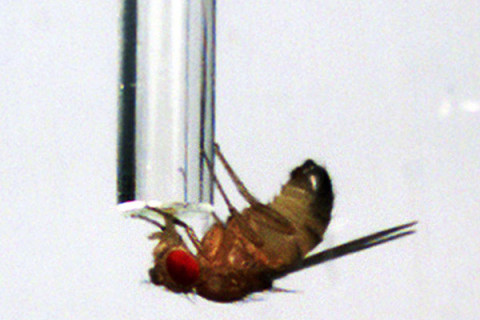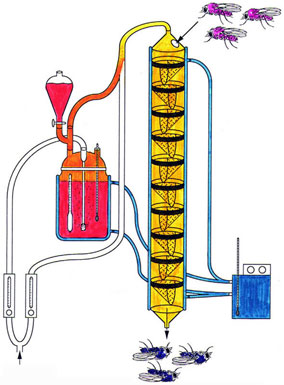 We know animals can get drunk. Some of us have seen it, like when squirrels eat fermented pumpkin and try to climb trees. It turns out that flies can get drunk just like animals, and are just as hilarious. This is interesting to me because you’d think that by being insects, they would be affected by alcohol differently. The fact is, drunk flies display behavior and tendencies very similar to that of humans while inebriated. This was discovered by researchers at the Ernest Gallo Center research clinic at the University of California, San Francisco.
We know animals can get drunk. Some of us have seen it, like when squirrels eat fermented pumpkin and try to climb trees. It turns out that flies can get drunk just like animals, and are just as hilarious. This is interesting to me because you’d think that by being insects, they would be affected by alcohol differently. The fact is, drunk flies display behavior and tendencies very similar to that of humans while inebriated. This was discovered by researchers at the Ernest Gallo Center research clinic at the University of California, San Francisco.
In efforts to discover the potential genetic basis for alcoholism, scientists studied Drosophila fruit fly genetics as a model for alcohol-induced behaviors. For the experiment, they hoped to get the flies wasted by trapping them in a clear plastic cylinder, then pumping ethanol vapor into the chamber.
Just to make sure, the scientists first bought the flies a few drinks as a pre-game.
While at the chamber-party, the flies pounded that vapor and eventually reached the point where they had enough booze in their veins to be considered legally intoxicated and dangerous on the flyways.
The results showed that drunk flies were like drunk humans in several ways. In the beginning, the flies became hyper and very active. As they downed more vapor shots, and as the alcohol in their systems rose, they became uncoordinated and belligerent, eventually flying into the walls and falling over. A little while longer, and they were passed the fuck out.
 This is pretty tight, but it gets even cooler. In humans, there are different tolerances between people. You have the lightweights, the heavyweights, and the moderates. Well, it turns out flies fall into this paradigm as well.
This is pretty tight, but it gets even cooler. In humans, there are different tolerances between people. You have the lightweights, the heavyweights, and the moderates. Well, it turns out flies fall into this paradigm as well.
The scientists discovered that the average fly took about 20 minutes to pass out. Others, the lightweights, got the spins and passed out almost immediately, at which point some of the other flies began to draw pictures of ejaculatory ducts on their faces. Some heavyweights champed through 35 minutes in the mist.
Scientists were excited to find that the lightweights had a particular gene, amnesiac, that creates a neuropeptide which activates certain messenger systems in fly brain cells. At the time, it was unclear exactly how alcohol was affecting this process.
With more research, it could be possible to cook up some drugs that modulate the function of amnesiac, as well as other genes that play a role in alcohol resistance. This would eventually lead to the ability to determine who is at risk for alcohol addiction, providing a significant hedge against the problem, especially for youths.
Of course, this will take time and work, but progress comes at a steady rate. Since these studies, scientists have expanded their efforts to include experimentation with cocaine and nicotine addiction.
The morning after the alcohol vapor experiment, the scientists treated the flies to a drop of coffee to slurp up with their proboscis’s (proboscisci?), and some nice smelly trash to fly around. In a little while, most of the flies’ hangovers were gone, except for the lightweights, who remained passed out until late in the afternoon.









